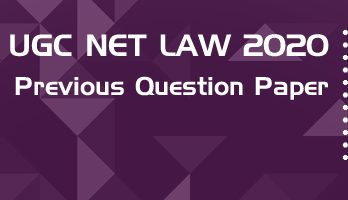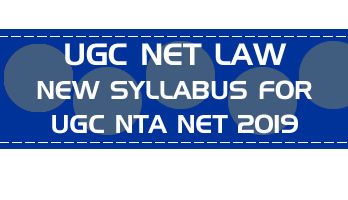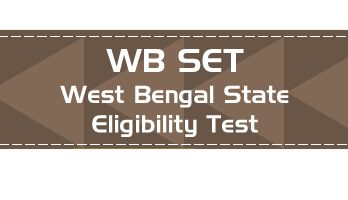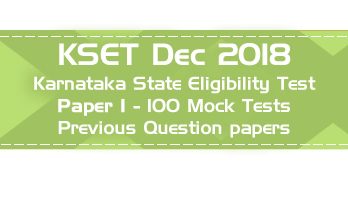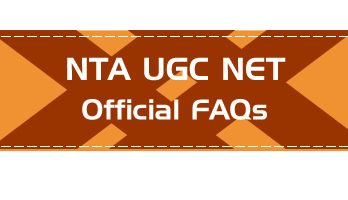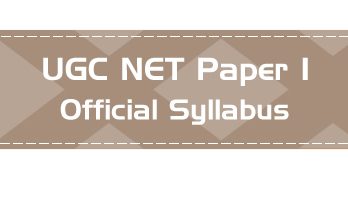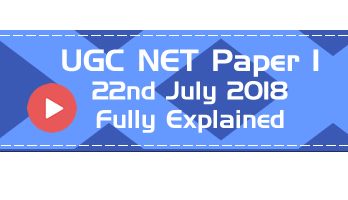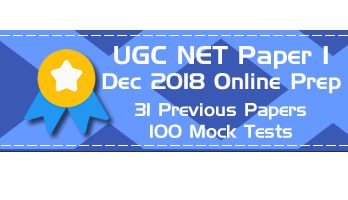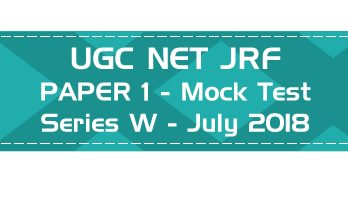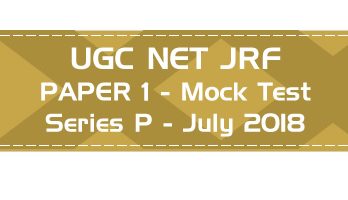- Latest Pattern Mock Tests including comprehension based questions
- Previous Question Papers with Answer Keys - From 2004 till the most recent exam
- 75 Full Length Mock Tests - New Pattern Paper II, with 100 questions each
- 50 Mini Practice Mock tests - with 25 questions each
- Unlimited Practice - New Questions in every attempt of all mocks
- Questions & Answer Choices randomly shuffled in every attempt for better practice
- Database of over 11000+ MCQs covering the entire syllabus
- Unlimited access and practice for one year from the date of purchase
- Accessible 24 x 7 via Smart-Phone browsers and Desktops
Authentic Feedback from previous LawMint users :
I got AIR 21 in CLAT PG. Thank you so much. Your mocks helped me a lot in my preparation 🙂 - Ayushi Jain
I have subscribed to your CLAT PG program and got AIR 36 in this year CLAT PG. I have also secured AIR 54 in AILET PG exam. I would like to thank you. Your mock paper really helps a lot - Shrashank Tripathi
I would like to thank you for the CLAT PG LLM COURSE. Practising mock tests there helped me in getting confidence and hence I was able to get AIR 45 in CLAT PG LLM - Akshay Awasthi
A year back, I relied on the IIT Kharagpur RGSOIPL mock test series by LawMint to prepare for my RGSOIPL entrance test. Few months back, I relied on your UGC NET Law series to prepare for UGC NET. I was the topper of the RGSOIPL entrance, and have cracked JRF in UGC NET. All thanks to LawMint - Anshuman Sahoo
"I got AIR 18 in CLAT PG and General Category rank 28 in AILET PG. I want to thank you for helping me practice well in controlled conditions from any place. It gave me a lot of confidence and I took the tests while travelling too. I also made it to IIT Kharagpur." - Vinodharani
"Lawmint has been of great help to me in securing AIR 25 in AILET PG and AIR 29 in CLAT PG examinations. The subjective and objective approach of the test series kept me up to date with the latest exam pattern." - Bhawna Nanda
"I, Nimmy Saira Zachariah joined you clat test series. I cleared AILET PG with 30th rank. Your test series were of immense help as it gave me clear idea of where my preparations stand thank you once again law mint." - Nimmy S Z
"Hey guys. Where do I start? If I thought that getting AIR 59 in Clat PG was it, then how wrong I was. With Lawmint now I have cracked UGC NET as well." - Joyanta Chakraborty
Note : Answer Keys to all Previous Question Papers published on LawMint are available to registered users of LawMint.com Online Practice Packs.
Check out all the HECI NTA NET or UGC CBSE NET Paper 1 previous question papers here : Previous Papers & Mock Tests
1. Which one of the following is the most important quality of a good teacher ?
– Punctuality and sincerity
– Content mastery
– Content mastery and reactive
– Content mastery and sociable
2. The primary responsibility for the teacher’s adjustment lies with
– The children
– The principal
– The teacher himself
– The community
3. As per the NCTE norms, what should be the staff strength for a unit of 100 students at B.Ed. level?
– 1 + 7
– 1 + 9
– 1 + 10
– 1 + 5
4. Research has shown that the most frequent symptom of nervous instability among teachers is
– Digestive upsets
– Explosive behaviour
– Fatigue
– Worry
5. Which one of the following statements is correct?
– Syllabus is an annexure to the curriculum.
– Curriculum is the same in all educational institutions.
– Curriculum includes both formal, and informal education.
– Curriculum does not include methods of evaluation.
6. A successful teacher is one who is
– Compassionate and disciplinarian
– Quite and reactive
– Tolerant and dominating
– Passive and active
7. Read the following passage carefully and answer the questions 7 to 12.
The phrase “What is it like?” stands for a fundamental thought process. How does one go about observing and reporting on things and events that occupy segments of earth space? Of all the infinite variety of phenomena on the face of the earth, how does one decide what phenomena to observe? There is no such thing as a complete description of the earth or any part of it, for every microscopic point on the earth’s surface differs from every other such point. Experience shows that the things observed are already familiar, because they are like phenomena that occur at home or because they resemble the abstract images and models developed in the human mind.
How are abstract images formed? Humans alone among the animals possess language; their words symbolize not only specific things but also mental images of classes of things. People can remember what they have seen or experienced because they attach a word symbol to them.
During the long record of our efforts to gain more and more knowledge about the face of the earth as the human habitat, there has been a continuing interplay between things and events. The direct observation through the senses is described as a percept; the mental image is described as a concept. Percepts are what some people describe as reality, in contrast to mental images, which are theoretical, implying that they are not real.
The relation of Percept to Concept is not as simple as the definition implies. It is now quite clear that people of different cultures or even individuals in the same culture develop different mental images of reality and what they perceive is a reflection of these preconceptions. The direct observation of things and events on the face of the earth is so clearly a function of the mental images of the mind of the observer that the whole idea of reality must be reconsidered.
Concepts determine what the observer perceives, yet concepts are derived from the generalizations of previous percepts. What happens is that the educated observer is taught to accept a set of concepts and then sharpens or changes these concepts during a professional career. In any one field of scholarship, professional opinion at one time determines what concepts and procedures are acceptable, and these form a kind of model of scholarly behaviour.
The problem raised in the passage reflects on
– thought process
– human behaviour
– cultural perceptions
– professional opinion
8. Read the following passage carefully and answer the questions 7 to 12.
The phrase “What is it like?” stands for a fundamental thought process. How does one go about observing and reporting on things and events that occupy segments of earth space? Of all the infinite variety of phenomena on the face of the earth, how does one decide what phenomena to observe? There is no such thing as a complete description of the earth or any part of it, for every microscopic point on the earth’s surface differs from every other such point. Experience shows that the things observed are already familiar, because they are like phenomena that occur at home or because they resemble the abstract images and models developed in the human mind.
How are abstract images formed? Humans alone among the animals possess language; their words symbolize not only specific things but also mental images of classes of things. People can remember what they have seen or experienced because they attach a word symbol to them.
During the long record of our efforts to gain more and more knowledge about the face of the earth as the human habitat, there has been a continuing interplay between things and events. The direct observation through the senses is described as a percept; the mental image is described as a concept. Percepts are what some people describe as reality, in contrast to mental images, which are theoretical, implying that they are not real.
The relation of Percept to Concept is not as simple as the definition implies. It is now quite clear that people of different cultures or even individuals in the same culture develop different mental images of reality and what they perceive is a reflection of these preconceptions. The direct observation of things and events on the face of the earth is so clearly a function of the mental images of the mind of the observer that the whole idea of reality must be reconsidered.
Concepts determine what the observer perceives, yet concepts are derived from the generalizations of previous percepts. What happens is that the educated observer is taught to accept a set of concepts and then sharpens or changes these concepts during a professional career. In any one field of scholarship, professional opinion at one time determines what concepts and procedures are acceptable, and these form a kind of model of scholarly behaviour.
According to the passage, human beings have mostly in mind
– Observation of things
– Preparation of mental images
– Expression through language
– To gain knowledge
9. Read the following passage carefully and answer the questions 7 to 12.
The phrase “What is it like?” stands for a fundamental thought process. How does one go about observing and reporting on things and events that occupy segments of earth space? Of all the infinite variety of phenomena on the face of the earth, how does one decide what phenomena to observe? There is no such thing as a complete description of the earth or any part of it, for every microscopic point on the earth’s surface differs from every other such point. Experience shows that the things observed are already familiar, because they are like phenomena that occur at home or because they resemble the abstract images and models developed in the human mind.
How are abstract images formed? Humans alone among the animals possess language; their words symbolize not only specific things but also mental images of classes of things. People can remember what they have seen or experienced because they attach a word symbol to them.
During the long record of our efforts to gain more and more knowledge about the face of the earth as the human habitat, there has been a continuing interplay between things and events. The direct observation through the senses is described as a percept; the mental image is described as a concept. Percepts are what some people describe as reality, in contrast to mental images, which are theoretical, implying that they are not real.
The relation of Percept to Concept is not as simple as the definition implies. It is now quite clear that people of different cultures or even individuals in the same culture develop different mental images of reality and what they perceive is a reflection of these preconceptions. The direct observation of things and events on the face of the earth is so clearly a function of the mental images of the mind of the observer that the whole idea of reality must be reconsidered.
Concepts determine what the observer perceives, yet concepts are derived from the generalizations of previous percepts. What happens is that the educated observer is taught to accept a set of concepts and then sharpens or changes these concepts during a professional career. In any one field of scholarship, professional opinion at one time determines what concepts and procedures are acceptable, and these form a kind of model of scholarly behaviour.
Concept means
– A mental image
– A reality
– An idea expressed in language form
– All of the given choices
10. Read the following passage carefully and answer the questions 7 to 12.
The phrase “What is it like?” stands for a fundamental thought process. How does one go about observing and reporting on things and events that occupy segments of earth space? Of all the infinite variety of phenomena on the face of the earth, how does one decide what phenomena to observe? There is no such thing as a complete description of the earth or any part of it, for every microscopic point on the earth’s surface differs from every other such point. Experience shows that the things observed are already familiar, because they are like phenomena that occur at home or because they resemble the abstract images and models developed in the human mind.
How are abstract images formed? Humans alone among the animals possess language; their words symbolize not only specific things but also mental images of classes of things. People can remember what they have seen or experienced because they attach a word symbol to them.
During the long record of our efforts to gain more and more knowledge about the face of the earth as the human habitat, there has been a continuing interplay between things and events. The direct observation through the senses is described as a percept; the mental image is described as a concept. Percepts are what some people describe as reality, in contrast to mental images, which are theoretical, implying that they are not real.
The relation of Percept to Concept is not as simple as the definition implies. It is now quite clear that people of different cultures or even individuals in the same culture develop different mental images of reality and what they perceive is a reflection of these preconceptions. The direct observation of things and events on the face of the earth is so clearly a function of the mental images of the mind of the observer that the whole idea of reality must be reconsidered.
Concepts determine what the observer perceives, yet concepts are derived from the generalizations of previous percepts. What happens is that the educated observer is taught to accept a set of concepts and then sharpens or changes these concepts during a professional career. In any one field of scholarship, professional opinion at one time determines what concepts and procedures are acceptable, and these form a kind of model of scholarly behaviour.
The relation of Percept to Concept is
– Positive
– Negative
– Reflective
– Absolute
11. Read the following passage carefully and answer the questions 7 to 12.
The phrase “What is it like?” stands for a fundamental thought process. How does one go about observing and reporting on things and events that occupy segments of earth space? Of all the infinite variety of phenomena on the face of the earth, how does one decide what phenomena to observe? There is no such thing as a complete description of the earth or any part of it, for every microscopic point on the earth’s surface differs from every other such point. Experience shows that the things observed are already familiar, because they are like phenomena that occur at home or because they resemble the abstract images and models developed in the human mind.
How are abstract images formed? Humans alone among the animals possess language; their words symbolize not only specific things but also mental images of classes of things. People can remember what they have seen or experienced because they attach a word symbol to them.
During the long record of our efforts to gain more and more knowledge about the face of the earth as the human habitat, there has been a continuing interplay between things and events. The direct observation through the senses is described as a percept; the mental image is described as a concept. Percepts are what some people describe as reality, in contrast to mental images, which are theoretical, implying that they are not real.
The relation of Percept to Concept is not as simple as the definition implies. It is now quite clear that people of different cultures or even individuals in the same culture develop different mental images of reality and what they perceive is a reflection of these preconceptions. The direct observation of things and events on the face of the earth is so clearly a function of the mental images of the mind of the observer that the whole idea of reality must be reconsidered.
Concepts determine what the observer perceives, yet concepts are derived from the generalizations of previous percepts. What happens is that the educated observer is taught to accept a set of concepts and then sharpens or changes these concepts during a professional career. In any one field of scholarship, professional opinion at one time determines what concepts and procedures are acceptable, and these form a kind of model of scholarly behaviour.
In the passage, the earth is taken as
– The Globe
– The Human Habitat
– A Celestial Body
– A Planet
12. Read the following passage carefully and answer the questions 7 to 12.
The phrase “What is it like?” stands for a fundamental thought process. How does one go about observing and reporting on things and events that occupy segments of earth space? Of all the infinite variety of phenomena on the face of the earth, how does one decide what phenomena to observe? There is no such thing as a complete description of the earth or any part of it, for every microscopic point on the earth’s surface differs from every other such point. Experience shows that the things observed are already familiar, because they are like phenomena that occur at home or because they resemble the abstract images and models developed in the human mind.
How are abstract images formed? Humans alone among the animals possess language; their words symbolize not only specific things but also mental images of classes of things. People can remember what they have seen or experienced because they attach a word symbol to them.
During the long record of our efforts to gain more and more knowledge about the face of the earth as the human habitat, there has been a continuing interplay between things and events. The direct observation through the senses is described as a percept; the mental image is described as a concept. Percepts are what some people describe as reality, in contrast to mental images, which are theoretical, implying that they are not real.
The relation of Percept to Concept is not as simple as the definition implies. It is now quite clear that people of different cultures or even individuals in the same culture develop different mental images of reality and what they perceive is a reflection of these preconceptions. The direct observation of things and events on the face of the earth is so clearly a function of the mental images of the mind of the observer that the whole idea of reality must be reconsidered.
Concepts determine what the observer perceives, yet concepts are derived from the generalizations of previous percepts. What happens is that the educated observer is taught to accept a set of concepts and then sharpens or changes these concepts during a professional career. In any one field of scholarship, professional opinion at one time determines what concepts and procedures are acceptable, and these form a kind of model of scholarly behaviour.
Percept means
– Direct observation through the senses
– A conceived idea
– Ends of a spectrum
– An abstract image
13. Action research means
– A longitudinal research
– An applied research
– A research initiated to solve an immediate problem
– A research with socioeconomic objective
14. Research is
– Searching again and again
– Finding solution to any problem
– Working in a scientific way to search for truth of any problem
– None of the given choices
15. A common test in research demands much priority on
– Reliability
– Useability
– Objectivity
– All of the given choices
16. Which of the following is the first step in starting the research process?
– Searching sources of information to locate problem.
– Survey of related literature
– Identification of problem
– Searching for solutions to the problem
17. If a researcher conducts a research on finding out which administrative style contributes more to institutional effectiveness ? This will be an example of
– Basic Research
– Action Research
– Applied Research
– None of the given choices
18. Normal Probability Curve should be
– Positively skewed
– Negatively skewed
– Leptokurtic skewed
– Zero skewed
19. In communication, a major barrier to reception of messages is
– audience attitude
– audience knowledge
– audience education
– audience income
20. Post-modernism is associated with
– newspapers
– magazines
– radio
– television
21. Didactic communication is
– intra-personal
– inter-personal
– organisational
– relational
22. In communication, the language is
– the non-verbal code
– the verbal code
– the symbolic code
– the iconic code
23. Identify the correct sequence of the following:
– Source, channel, message, receiver
– Source, receiver, channel, message
– Source, message, receiver, channel
– Source, message, channel, receiver
24. Assertion (A): Mass media promote a culture of violence in the society.
Reason (R): Because violence sells in the market as people themselves are violent in character.
– Both (A) and (R) are true and (R) is the correct explanation of (A).
– Both (A) and (R) are true, but (R) is not the correct explanation of (A).
– (A) is true, but (R) is false.
– Both (A) and (R) are false.
25. When an error of 1% is made in the length of a square, the percentage error in the area of a square will be
– 0
– 1/2
– 1
– 2
26. On January 12, 1980, it was a Saturday. The day of the week on January 12, 1979 was
– Thursday
– Friday
– Saturday
– Sunday
27. If water is called food, food is called tree, tree is called earth, earth is called world, which of the following grows a fruit?
– Water
– Tree
– World
– Earth
28. E is the son of A, D is the son of B, E is married to C, C is the daughter of B. How is D related to E?
– Brother
– Uncle
– Father-in-law
– Brother-in-law
29. If INSURANCE is coded as ECNARUSNI, how HINDRANCE will be coded?
– CADNIHWCE
– HANODEINR
– AENIRHDCN
– ECNARDNIH
30. Find the next number in the following series: 2, 5, 10, 17, 26, 37, 50, ?
– 63
– 65
– 67
– 69
31. Which of the following is an example of circular argument?
– God created man in his image and man created God in his own image.
– God is the source of a scripture and the scripture is the source of our knowledge of God.
– Some of the Indians are great because India is great.
– Rama is great because he is Rama.
32. Lakshmana is a morally good person because
– he is religious
– he is educated
– he is rich
– he is rational
33. Two statements I and II given below are followed by two conclusions (a) and (b). Supposing the statements are true, which of the following conclusions can logically follow?
I. Some religious people are morally good.
II. Some religious people are rational.
Conclusions:
(a) Rationally religious people are good morally.
(b) Non-rational religious persons are not morally good.
– Only (a) follows.
– Only (b) follows.
– Both (a) and (b) follow.
– Neither (a) nor (b) follows.
34. Certainty is
– an objective fact
– emotionally satisfying
– logical
– ontological
35. Question is based on the following diagram in which there are three intersecting circles I, S and P where circle I stands for Indians, circle S stands for scientists and circle P for politicians. Different regions of the figure are lettered from a to g.
The region which represents non Indian scientists who are politicians.
– f
– d
– a
– c
36. Question is based on the following diagram in which there are three intersecting circles I, S and P where circle I stands for Indians, circle S stands for scientists and circle P for politicians. Different regions of the figure are lettered from a to g.
The region which represents politicians who are Indians as well as scientists.
– b
– c
– a
– d
37. The population of a city is plotted as a function of time (years) in graphic form below:
Which of the following inference can be drawn from above plot?
– The population increases exponentially.
– The population increases in parabolic fashion.
– The population initially increases in a linear fashion and then stabilizes.
– The population initially increases exponentially and then stabilizes.
38. In the following chart, the price of logs is shown in per cubic metre and that of Plywood and Saw Timber in per tones. Study the chart and answer the following question.
Which product shows the maximum percentage increase in price over the period?
– Saw timber
– Plywood
– Log
– None of the given choices
39. In the following chart, the price of logs is shown in per cubic metre and that of Plywood and Saw Timber in per tones. Study the chart and answer the following question.
What is the maximum percentage increase in price per cubic metre of log ?
– 6
– 12
– 18
– 20
40. In the following chart, the price of logs is shown in per cubic metre and that of Plywood and Saw Timber in per tones. Study the chart and answer the following question.
In which year the prices of two products increased and that of the third increased ?
– 2000
– 2002
– 2003
– 2006
41. Which one of the following is the oldest Archival source of data in India ?
– National Sample Surveys
– Agricultural Statistics
– Census
– Vital Statistics
42. In a large random data set following normal distribution, the ratio (%) of number of data points which are in the range of (mean ± standard deviation) to the total number of data points, is
– ~ 50%
– ~ 67%
– ~ 97%
– ~ 47%
43. Which number system is usually followed in a typical 32-bit computer?
– 2
– 8
– 10
– 16
44. Which one of the following is an example of Operating System?
– Microsoft Word
– Microsoft Excel
– Microsoft Access
– Microsoft Windows
45. Which one of the following represents the binary equivalent of the decimal number 23?
– 01011
– 10111
– 10011
– None of the given choices
46. Which one of the following is different from other members?
– Google
– Windows
– Linux
– Mac
47. Where does a computer add and compare its data?
– CPU
– Memory
– Hard disk
– Floppy disk
48. Computers on an internet are identified by
– e-mail address
– street address
– IP address
– None of the given choices
49. The Right to Information Act, 2005 makes the provision of
– Dissemination of all types of information by all Public authorities to any person.
– Establishment of Central, State and District Level Information Commissions as an appellate body.
– Transparency and accountability in Public authorities.
– All of the given choices
50. Which type of natural hazards cause maximum damage to property and lives?
– Hydrological
– Hydro-meteorological
– Geological
– Geo-chemical
51. Dioxins are produced from
– Wastelands
– Power plants
– Sugar factories
– Combustion of plastics
52. The slogan “A tree for each child” was coined for
– Social forestry programme
– Clean Air programme
– Soil conservation programme
– Environmental protection programme
53. The main constituents of biogas are
– Methane and Carbon di-oxide
– Methane and Nitric oxide
– Methane, Hydrogen and Nitric oxide
– Methane and Sulphur di-oxide
54. Assertion (A): In the world as a whole, the environment has degraded during past several decades.
Reason (R): The population of the world has been growing significantly.
– (A) is correct, (R) is correct and (R) is the correct explanation of (A).
– (A) is correct, (R) is correct and (R) is not the correct explanation of (A).
– (A) is correct, but (R) is false.
– (A) is false, but (R) is correct.
55. Climate change has implications for
1. soil moisture
2. forest fires
3. biodiversity
4. ground water
– 1 and 3
– 1, 2 and 3
– 1, 3 and 4
– 1, 2, 3 and 4
56. The accreditation process by National Assessment and Accreditation Council (NAAC) differs from that of National Board of Accreditation (NBA) in terms of
– Disciplines covered by both being the same, there is duplication of efforts.
– One has institutional grading approach and the other has programme grading approach.
– Once get accredited by NBA or NAAC, the institution is free from renewal of grading, which is not a progressive decision.
– This accreditation amounts to approval of minimum standards in the quality of education in the institution concerned.
57. Which option is not correct?
– Most of the educational institutions of National repute in scientific and technical sphere fall Under 64th entry of Union list.
– Education, in general, is the subject of concurrent list since 42nd Constitutional Amendment Act 1976.
– Central Advisory Board on Education (CABE) was first established in 1920.
– India had implemented the right to Free and Compulsory Primary Education in 2002 through 86th Constitutional Amendment.
58. Which statement is not correct about the “National Education Day” of India?
– It is celebrated on 5th September every year.
– It is celebrated on 11th November every year.
– It is celebrated in the memory of India’s first Union Minister of Education, Dr. Abul Kalam Azad.
– It is being celebrated since 2008
59. Match List-I with List-II and select the correct answer from the codes given below:
List – I (Articles of the Constitution)
(a) Article 280
(b) Article 324
(c) Article 323
(d) Article 315
List – II (Institutions)
(i) Administrative Tribunals
(ii) Election Commission of India
(iii) Finance Commission at Union level
(iv) Union Public Service Commission
Choose the answer that corresponds to the sequence (a) (b) (c) (d)
– (i) (ii) (iii) (iv)
– (iii) (ii) (i) (iv)
– (ii) (iii) (iv) (i)
– (ii) (iv) (iii) (i)
60. Deemed Universities declared by UGC under Section 3 of the UGC Act 1956, are not permitted to
– Offer programmes in higher education and issue degrees.
– give affiliation to any institute of higher education.
– open off-campus and off-shore campus anywhere in the country and overseas respectively without the permission of the UGC.
– offer distance education programmes without the approval of the Distance Education Council
- Latest Pattern Mock Tests including comprehension based questions
- Previous Question Papers with Answer Keys - From 2004 till the most recent exam
- 75 Full Length Mock Tests - New Pattern Paper II, with 100 questions each
- 50 Mini Practice Mock tests - with 25 questions each
- Unlimited Practice - New Questions in every attempt of all mocks
- Questions & Answer Choices randomly shuffled in every attempt for better practice
- Database of over 11000+ MCQs covering the entire syllabus
- Unlimited access and practice for one year from the date of purchase
- Accessible 24 x 7 via Smart-Phone browsers and Desktops
Authentic Feedback from previous LawMint users :
I got AIR 21 in CLAT PG. Thank you so much. Your mocks helped me a lot in my preparation 🙂 - Ayushi Jain
I have subscribed to your CLAT PG program and got AIR 36 in this year CLAT PG. I have also secured AIR 54 in AILET PG exam. I would like to thank you. Your mock paper really helps a lot - Shrashank Tripathi
I would like to thank you for the CLAT PG LLM COURSE. Practising mock tests there helped me in getting confidence and hence I was able to get AIR 45 in CLAT PG LLM - Akshay Awasthi
A year back, I relied on the IIT Kharagpur RGSOIPL mock test series by LawMint to prepare for my RGSOIPL entrance test. Few months back, I relied on your UGC NET Law series to prepare for UGC NET. I was the topper of the RGSOIPL entrance, and have cracked JRF in UGC NET. All thanks to LawMint - Anshuman Sahoo
"I got AIR 18 in CLAT PG and General Category rank 28 in AILET PG. I want to thank you for helping me practice well in controlled conditions from any place. It gave me a lot of confidence and I took the tests while travelling too. I also made it to IIT Kharagpur." - Vinodharani
"Lawmint has been of great help to me in securing AIR 25 in AILET PG and AIR 29 in CLAT PG examinations. The subjective and objective approach of the test series kept me up to date with the latest exam pattern." - Bhawna Nanda
"I, Nimmy Saira Zachariah joined you clat test series. I cleared AILET PG with 30th rank. Your test series were of immense help as it gave me clear idea of where my preparations stand thank you once again law mint." - Nimmy S Z
"Hey guys. Where do I start? If I thought that getting AIR 59 in Clat PG was it, then how wrong I was. With Lawmint now I have cracked UGC NET as well." - Joyanta Chakraborty
Note : Answer Keys to all Previous Question Papers published on LawMint are available to registered users of our Online Practice Packs.
Check out all the HECI NTA NET or UGC CBSE NET Paper 1 previous question papers here : Previous Papers & Mock Tests


